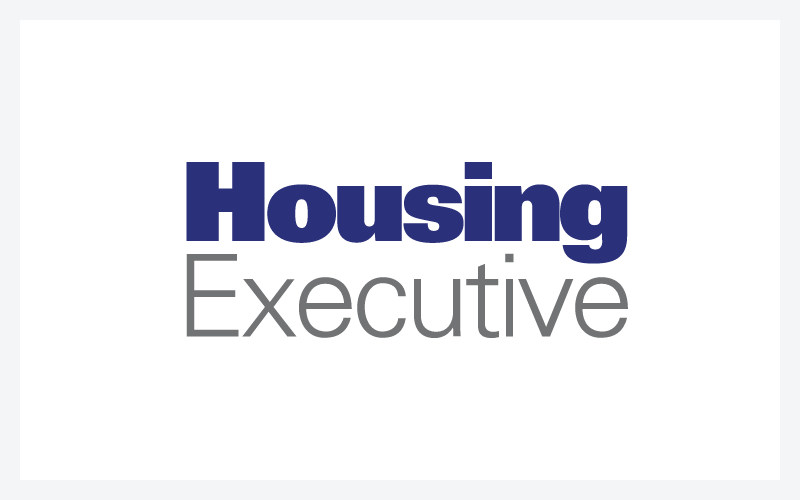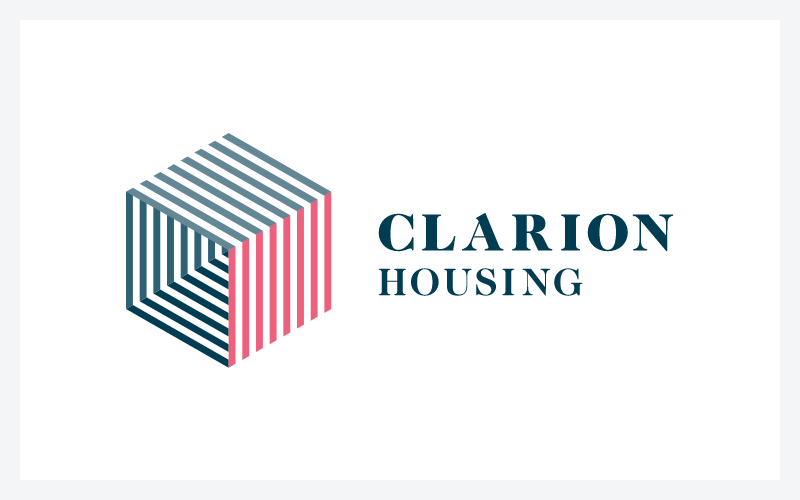NHMF Awards 2022 - Best Net Zero Carbon Initiative Winner : NIHE
Judges’ comments: -- A great initiative with clear objectives and numerous positive outcomes -- Some impressive results with good practice and likely to be a common model in the very near future. -- Honest/practical about savings and benefits, including repair cost reduction

What is the project?
This pilot retrofit scheme examines how to improve five houses to different energy efficiency standards. It was completed in 2018 before two years of post-occupancy evaluation to understand the benefits and challenges of implementing various retrofit measures and inform the strategy for future retrofit schemes on a much larger scale. This pilot scheme was specifically designed to research ways in which social housing landlords could reduce the carbon emissions of their stock in an effective and affordable way and meet the expectations of the government’s net zero targets.
What is innovative about the project?
Following completion, the temperature and humidity of the dwellings were monitored for two years and compared to the data collected during pre-retrofit monitoring. Pre- and post-retrofit fuel costs were also compared. SAP reports were analysed to determine the reduction in carbon emissions and fabric heat loss.
What are the measurable benefits to the client, the contractor, the resident and the neighbourhood?
Social housing retrofit schemes such as this one naturally benefit the occupants more than any other stakeholder because they enjoy lower fuel bills and increased comfort without the capital cost.
Landlords benefit in other ways that may be less direct but are equally important. For example, this project focussed on fabric first measures which protect the building from harmful degradation such as mould, condensation and damp, prolonging the lifespan of the buildings. The physical and aesthetic transformation of the properties makes them more desirable so that existing tenants are more likely to remain and a new tenant would be easily appointed if a change of tenancy does occur, reducing revenue lost from rent arrears as well as lower fuel bills easing the pressure for tenants to pay rent regularly.
Measured improvements showed major reductions have been made to harmful emissions and wasted energy, as well as significant increases to the period of time at a comfortable temperature and humidity:
- Two out of five properties reached EPC B and three properties reached EPC C.
- BRE carried out monitoring between October 2018 and March 2019 and compared this with pre-retrofit monitoring between December 2014 and May 2015. The results show the houses stayed between 18-21°C for an average of 63.3% of time, an improvement of 43%. Humidity is between 40-70% for 97.2% of the time, a 22% improvement on pre-retrofit data.
- There was 45.3% average decrease in total fabric heat loss.
- Air permeability results range from 2.66 m³/h/m² to 8.57 m³/h/m² with an average of 6.75 m³/h/m².
- CO2 emissions reduced by an average of 75.5% with individual houses ranging from 69.9% to 84.2%.
- There was £748 on average reduction in fuel bills.
For the contractor, this scheme delivered a high-quality installation underpinned by a comprehensive and detailed retrofit assessment and design. He gains experience in low energy construction and retrofit for use in future schemes.
For the wider community, the Housing Executive is already applying some of the techniques and measures trialled in this scheme in larger retrofit programmes. In particular, external wall insulation is being rolled out to communities across the province, incorporating the optimal details identified in the Newry scheme that reduced thermal bridging and increased airtightness. Ventilation is also now a major focus, with systems being upgraded where insulation is installed. More locally, the residents of the surrounding neighbourhood benefit from the improved aesthetics of the streetscape, and as the Housing Executive start to implement retrofit at a larger scale, everyone will benefit from improved air quality.
What are the financial costs and measurable cashable benefits over a defined time period?
Following completion, pre- and post-retrofit fuel costs were compared, and SAP reports were analysed to determine carbon emissions and fabric heat loss reductions. There has also been significant carbon savings over these five dwellings, achieving an estimated 26,968 kg/ year. The average cost of repairs pre-retrofit was £326, and £27 post retrofit, a decrease of 91.5% in maintenance costs, which supports the notion that retrofit can reduce maintenance, although arguably this could be said for all maintenance works of significant expenditure. Many more years’ data will need to be collected from this scheme before any solid conclusions can be drawn, particularly regarding the range of any extended lifespan.
The impact of retrofit measures in terms of cost and benefit can be calculated in multiple ways of varying complexity. Ideally, over the lifetime of a measure, the cost of installation will be less than the total savings in fuel costs. Residents benefit from both the reduced bills and increased comfort, health and well-being but tenants do not pay for the work and Landlords do not save on fuel bills. Simple payback calculations cannot assess costs and benefits. Actual fuel cost data was collated independently by an Ulster University PhD student, Dr. Anna Czerwinska, who interviewed the occupants on multiple occasions to understand the impact the retrofit had on their lives.
How relevant is this as an example that might be followed by other organisations?
The Northern Ireland Housing Executive, published a report of this retrofit pilot project to improve five houses (built in 1979) to different energy efficiency standards, describing the process from its very early, ambitious beginnings, to the detailed and target-driven approach finally delivered. The aim of the report is to disseminate the lessons learned to stakeholders who may be considering, or are currently undertaking similar retrofit work, perhaps for the first time. This includes Housing Associations, homeowners, designers, students, policy makers and government bodies. As the landlord of 85,000 properties, most of which were constructed prior to 1990, it faces an enormous challenge to upgrade them to the required standard to reduce greenhouse gas emissions.
To prepare for this, the Housing Executive needed first-hand experience of implementing innovative measures to its own stock to inform the strategy for future retrofit schemes on a much larger scale. The project would also determine how deep such retrofits should go to ensure the most value for money. Five almost identical properties were upgraded from EPC E to improved energy performance standards up to EPC B. Outcomes were compared in terms of capital expenditure, disruption to occupants, in-use running costs and carbon reduction.
There is no doubt the experience gained from this scheme has educated and enlightened the Housing Executive in retrofit works. Inevitably, there are issues that emerge from such schemes. This experience could be applied by the industry and adapted to other similar net zero or retrofit schemes and the lessons learned will be disseminated to stakeholders considering, or currently undertaking similar retrofit work, perhaps for the first time.
Description
This scheme is the Housing Executive’s most ambitious retrofit project to date, delivered using in-house expertise and collaboration with industry leaders. The protracted duration of the scheme from inception to completion is a reflection of the time taken to consider the best approach and advance the in-house teams’ knowledge of energy efficient design. There were complexities in terms of the accelerated development of new innovative products over the years of the project, in addition to the continuously evolving trends in low-energy construction. There is no doubt the experience gained from this scheme has educated and enlightened the Housing Executive in retrofit works. Inevitably, there are issues that emerge from such schemes.
More positively, Northern Ireland is in a good position to learn from well-documented failures of retrofit previously experienced in other countries, and to embrace emerging standards for retrofit such as PAS 2035. The Newry pilot scheme began as the Housing Executive’s first experience of deep retrofit, and the scheme has proved to be an excellent mechanism to inform future retrofit in terms of social acceptance by the tenants and economic value to the organisation. The proven success of the EWI installation, and the fact that it is compatible with a range of heating systems including electric heat pumps, reducing peak winter heating demands and the potential peak load on the grid, makes this a practical and affordable solution for more widespread retrofit.
Background
The Housing Executive manages approximately 86,000 houses across the province, the majority of which were built prior to 1990 using a broad range of construction types including traditional solid walls, cavities and system-built structures. The current average SAP score across the portfolio is 63 (EPC D), and in response to the Government’s commitment to reduce carbon emissions, there has been a surge in efforts to increase this to EPC C by 2030. This is a huge challenge financially, and in terms of scheduling and procurement, and navigating the inevitable complexities of existing occupied properties. Delivering a high standard of retrofit is even more challenging when there is already a shortage of skills and labour in the construction industry, and limited experience in retrofit in comparison to the rest of the UK.
Note: This is part of series of Best Practice articles and case studies that the NHMF is producing.
NHMF hosted a webinar on The Social Sector Response to Zero Carbon on 12 October. You can see the presentations at: https://www.nhmf.co.uk/training. Further webinars will be planned for 2022.


